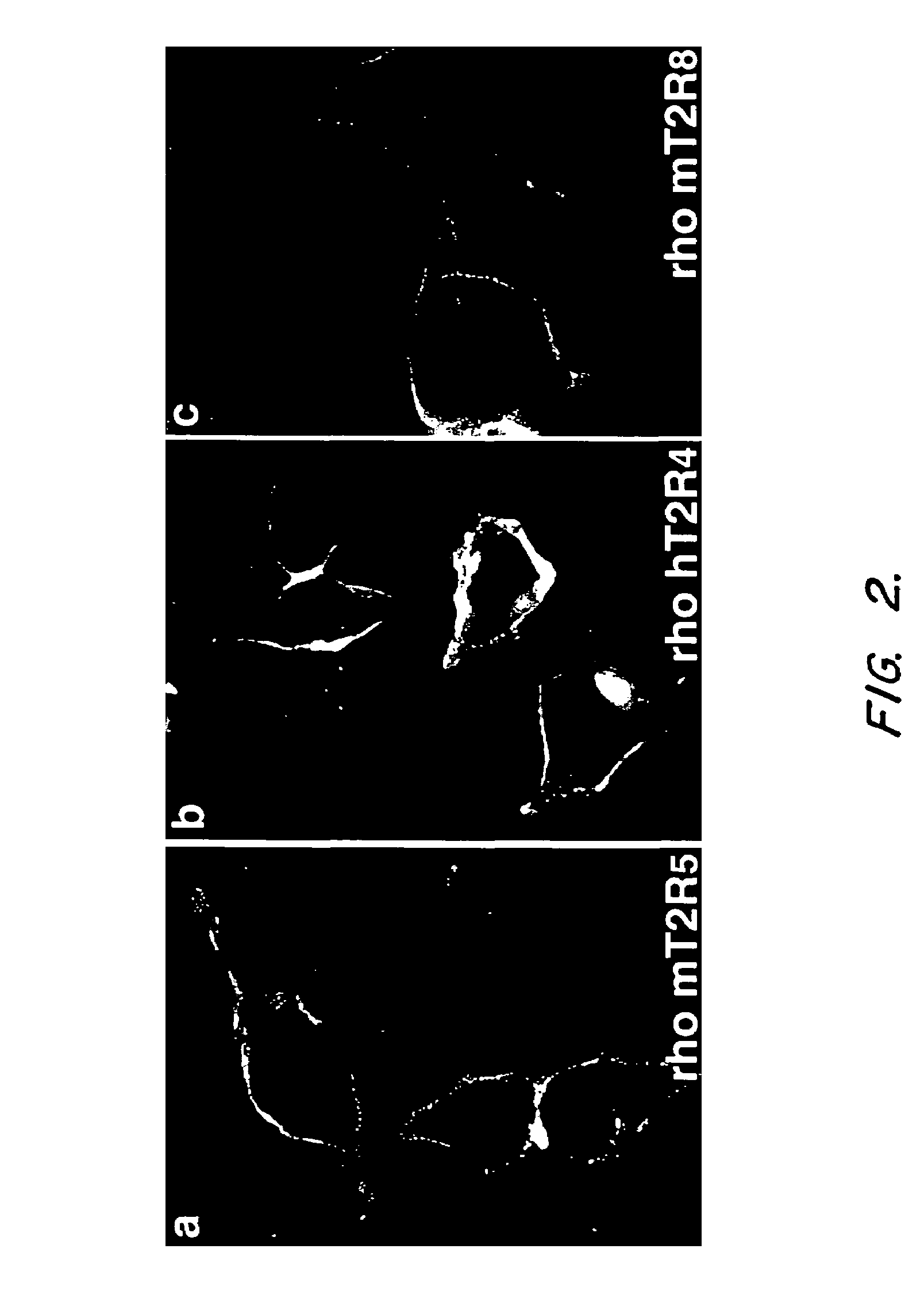Method for screening taste-modulating compounds
a technology of modulating compounds and membrane receptors, which is applied in the field of screening taste-modulating compounds, can solve the problems of little knowledge about the specific membrane receptors involved in taste transduction, and achieve the effect of modulating taste signaling
- Summary
- Abstract
- Description
- Claims
- Application Information
AI Technical Summary
Benefits of technology
Problems solved by technology
Method used
Image
Examples
examples
[0304]The following examples are provided by way of illustration only and not by way of limitation. Those of skill in the art will readily recognize a variety of noncritical parameters that could be changed or modified to yield essentially similar results.
example i
Identification of the T2R Gene Family
[0305]Recent genetic linkage studies in humans identified a locus at 5p15 that is associated with the ability to respond to the bitter substance 6-n-propyl-2-thiouracil (PROP; Reed et al., Am. J. Hum. Genet. 64:1478-1480 (1999)). To determine whether differences in PROP sensitivity reflected functional differences in a bitter taste receptor, DNA sequence databases were searched for genes encoding candidate transmembrane proteins at this location. Analysis of open reading frames in 450 kb of DNA spanning six sequenced human genomic BAC clones(see, e.g., accession number AC003015) from this interval identified a novel GPCR (T2R1) at 5p15.2. T2R1 has seven putative transmembrane segments as well as several conserved residues often present in GPCRs (Probst et al., DNA Cell. Biol. 11:1-20 (1992)).
[0306]Computer searches using T2R1, and reiterated with T2R1-related sequences, revealed 19 additional human receptors (12 full-length and 7 pseudogenes). Fu...
example ii
Organization of Human T2R Genes
[0308]The identified human T2R genes are localized on three chromosomes, and are often organized as head-to-tail arrays. For example, four receptor genes are clustered within a single PAC clone from 7q31 and nine in a BAC clone from 12p13. There may be more human T2Rs in these arrays, as several additional human T2Rs were found within partially sequenced BAC clones that overlap the 9 gene T2R cluster. Within a given array, the similarity of receptors is highly variable, including both relatively related (e.g. hT2R13, hT2R14 and hT2R15), and highly divergent receptors (e.g. hT2R3 and hT2R4). This type of organization is mirrored in the mouse (see below), and resembles the genomic organization that has been observed for olfactory receptor genes in humans, mice, flies and worms (Rouquier et al., Nat. Genet. 18:243-250 (1998)); Sullivan et al., PNAS 93:884-888 (1996)); Clyne et al., Neuron 22:327-388 (1999)); Vosshall et al., Cell 96:725-736 (1999)); Troem...
PUM
 Login to View More
Login to View More Abstract
Description
Claims
Application Information
 Login to View More
Login to View More - R&D
- Intellectual Property
- Life Sciences
- Materials
- Tech Scout
- Unparalleled Data Quality
- Higher Quality Content
- 60% Fewer Hallucinations
Browse by: Latest US Patents, China's latest patents, Technical Efficacy Thesaurus, Application Domain, Technology Topic, Popular Technical Reports.
© 2025 PatSnap. All rights reserved.Legal|Privacy policy|Modern Slavery Act Transparency Statement|Sitemap|About US| Contact US: help@patsnap.com



